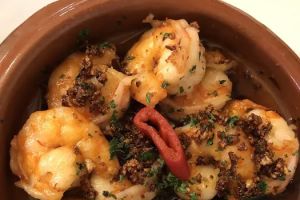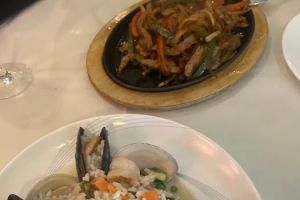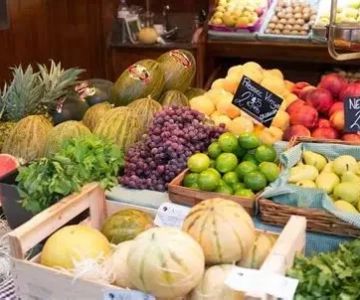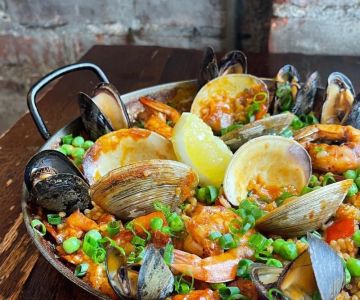
- -exploring-spanish-cooking-techniques-for-perfect-seafood-dishes-#exploring-spanish-cooking-techniques-for-perfect-seafood-dishes
- -spanish-seafood-dishes-#spanish-seafood-dishes
- -seafood-cooking-techniques-#seafood-cooking-techniques
- -spanish-seafood-recipes-#spanish-seafood-recipes
- -perfect-seafood-dishes-#perfect-seafood-dishes
1. Exploring Spanish Cooking Techniques for Perfect Seafood Dishes
Spanish cuisine is renowned for its bold flavors and innovative use of ingredients, especially when it comes to seafood. The Mediterranean coastline offers an abundance of fresh seafood, and Spanish cooking techniques elevate these ingredients to create memorable dishes. Whether you're new to Spanish food or an experienced home chef, learning about the specific methods used to prepare seafood can help you make perfect Spanish seafood dishes every time.
2. Why Spanish Seafood Dishes Are Unique
Spanish seafood is a true reflection of the country’s diverse coastal regions, from the Mediterranean to the Atlantic. The country’s long history of maritime culture has shaped how seafood is prepared and enjoyed. Spain is known for using simple yet effective cooking techniques that bring out the natural flavors of the sea, often enhanced with fresh herbs, spices, and a variety of oils. The use of local, seasonal ingredients is key to making the dishes authentic and flavorful.

Spanish Restaurant Tapas - Alcala
New YorkNew York CountyNew York
246 E 44th St, New York, NY 10017, USA
2.1 Coastal Influences
Spanish seafood recipes often reflect the distinct characteristics of the regions they originate from. For instance, in Galicia (northern Spain), seafood dishes like “empanada de mariscos” (seafood pie) are common, while the Mediterranean coast is known for its lighter, olive oil-based dishes like “paella” or “arroz a banda” (a type of seafood rice). Each region has its own techniques and signature dishes that focus on highlighting the natural flavors of seafood.
2.2 Fresh Ingredients and Minimalism
One of the hallmarks of Spanish seafood cooking is the use of fresh, high-quality ingredients. Whether it’s fish, shellfish, or mollusks, seafood is typically cooked with minimal seasoning to allow its natural flavors to shine. Techniques like grilling, steaming, and pan-searing are commonly used to preserve the delicate taste and texture of the seafood.
3. Key Spanish Seafood Cooking Techniques
Spanish cuisine offers a range of cooking techniques specifically designed for seafood. Understanding these methods will not only improve your skills in the kitchen but also help you achieve perfectly cooked seafood every time.
3.1 Grilling (A la Parrilla)
Grilling seafood is a popular technique in Spain, particularly along the Mediterranean coast. The key to grilling seafood perfectly is to avoid overcooking, as seafood can become tough and dry. Spanish chefs often grill fish, such as “dorado” (bream) or “lubina” (bass), over open flames or on a griddle (plancha). A simple marinade of olive oil, garlic, and herbs is usually enough to enhance the seafood’s flavor. The result is a smoky, charred exterior with a tender, juicy interior.
3.2 Sautéing (Sofrito)
Sautéing seafood in a hot pan with oil is another essential technique in Spanish cooking. This method is particularly popular for shrimp, squid, and small fish like anchovies. The key to a great sauté is to cook the seafood quickly over high heat to achieve a crispy exterior without losing the delicate texture inside. Sofrito, a mixture of onions, garlic, tomatoes, and bell peppers, is often used as a base for sautéing, giving the dish a rich, savory depth of flavor.
3.3 Steaming
Steaming is a gentle method that preserves the natural moisture of seafood while enhancing its flavors. This technique is often used for shellfish like clams, mussels, and prawns. To steam seafood in a Spanish style, you can place it in a covered pan over simmering water with a bit of white wine, garlic, and herbs. The result is succulent seafood that’s infused with aromatic flavors.
3.4 Braising (Estofado)
Braising is used in some regional Spanish dishes where seafood is cooked slowly in a flavorful broth. This method is often applied to tougher cuts of fish or to seafood like octopus. A slow braise allows the flavors to meld together, and the seafood becomes incredibly tender. The stew-like consistency of the braised dish makes it a perfect comfort food, particularly in colder months.
3.5 Paella: The Iconic Spanish Dish
One of the most famous Spanish seafood dishes is paella. Paella originated in Valencia and is typically made with rice, saffron, and a variety of proteins, including seafood like shrimp, mussels, and clams. The key to a great paella lies in the technique of cooking the rice. It should be slightly crispy at the bottom (socarrat) while the top layer is perfectly tender and flavorful. The seafood should be added at the right moment to ensure it cooks through but remains juicy and tender.
4. Popular Spanish Seafood Recipes to Try
Now that you’ve explored the techniques, it’s time to dive into some of the most popular Spanish seafood recipes that showcase these methods. These dishes will transport you straight to the Mediterranean shores of Spain.
4.1 Paella de Mariscos (Seafood Paella)
Paella de Mariscos is one of Spain's most iconic seafood dishes. The combination of succulent shellfish, perfectly cooked rice, and the distinctive taste of saffron creates a dish that’s both flavorful and comforting. For a successful paella, it’s important to use short-grain rice that absorbs the liquid and spices, creating a rich, flavorful base. Paella de Mariscos can be customized to include a variety of seafood, such as shrimp, squid, and mussels.
4.2 Arroz a Banda (Seafood Rice)
Another favorite from the Valencia region is Arroz a Banda, a dish that features rice cooked in a flavorful seafood broth, often accompanied by a variety of shellfish. The dish is traditionally served with a side of aioli (garlic mayonnaise) for added richness. The key to making Arroz a Banda is to use fresh seafood and allow the rice to absorb all the natural flavors from the broth.
4.3 Gambas a la Plancha (Grilled Shrimp)
Gambas a la Plancha is a simple yet incredibly delicious Spanish dish where shrimp are grilled to perfection. They’re seasoned with olive oil, sea salt, and a squeeze of lemon, allowing the natural sweetness of the shrimp to shine through. This dish is perfect for a light appetizer or a casual meal, often served with a side of bread and a glass of crisp white wine.
4.4 Pulpo a la Gallega (Galician Style Octopus)
This dish from the Galicia region of Spain is a true celebration of seafood. Octopus is simmered until tender and then served with a sprinkle of paprika, a drizzle of olive oil, and a squeeze of lemon. It’s traditionally enjoyed with boiled potatoes and is a popular dish in Spanish tapas bars.
5. Tips for Perfect Spanish Seafood Dishes
To ensure your seafood dishes come out perfectly every time, here are some additional tips:
5.1 Use Fresh Seafood
Fresh seafood is key to making any Spanish seafood dish stand out. Visit your local fish market for the freshest catches, and try to buy seasonal varieties that are abundant in your area.
5.2 Don't Overcook
Seafood is delicate and can become rubbery or dry if overcooked. Use a timer and keep an eye on the cooking process to avoid this. For grilling or pan-searing, seafood typically cooks in just a few minutes.
5.3 Balance Flavors
Spanish seafood dishes often rely on a balance of bold and subtle flavors. Don’t be afraid to use garlic, lemon, herbs, and olive oil, but be sure not to overpower the natural flavors of the seafood.
If you're looking for authentic ingredients to make your Spanish seafood dishes stand out, check out Rubi Spanish Table for a wide selection of high-quality products that will elevate your cooking experience.








 Tomiño Taberna Gallega4.0 (2164 reviews)
Tomiño Taberna Gallega4.0 (2164 reviews) TU Chicken4.0 (86 reviews)
TU Chicken4.0 (86 reviews) Bridge Coffee Shop4.0 (398 reviews)
Bridge Coffee Shop4.0 (398 reviews) Grillers Puerto Rico4.0 (14 reviews)
Grillers Puerto Rico4.0 (14 reviews) El Pote Español4.0 (450 reviews)
El Pote Español4.0 (450 reviews) Marbella4.0 (854 reviews)
Marbella4.0 (854 reviews) The Best Spanish Food Markets in Murcia for Fresh Seasonal Ingredients
The Best Spanish Food Markets in Murcia for Fresh Seasonal Ingredients How to Make Spanish Piquillos con Jamón: Piquillos with Ham
How to Make Spanish Piquillos con Jamón: Piquillos with Ham Discovering Spanish Cured Meats and Their Culinary Uses
Discovering Spanish Cured Meats and Their Culinary Uses The Secret to Perfectly Grilled Spanish Chorizo: Tips and Techniques
The Secret to Perfectly Grilled Spanish Chorizo: Tips and Techniques How to Make Spanish Calamares a la Plancha con Pimientos: Grilled Squid with Peppers
How to Make Spanish Calamares a la Plancha con Pimientos: Grilled Squid with Peppers How to Make Spanish Tarta de Fresas: Delicious Strawberry Cake Recipe
How to Make Spanish Tarta de Fresas: Delicious Strawberry Cake Recipe